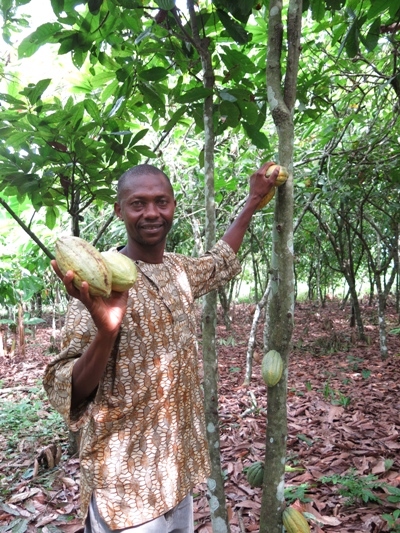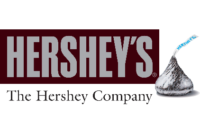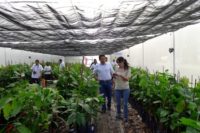An advocacy group that has long attacked alleged issues in Hershey’s cocoa supply chain finally seems to be pleased with the chocolate maker.
The “Raise the Bar, Hershey!” Coalition released a statement saying it welcomed news that Hershey had released a timeline for transition to certified cocoa after Hershey unveiled its “21st Century Cocoa Plan” last week.
“We are pleased by this news, especially the fact that Hershey has revealed the third-party certifiers it will be working with and a more detailed timeline for when it plans to transition its cocoa to responsible sources," said Elizabeth O'Connell, campaign director for Green America.

|
| A cocoa farmer holds cocoa pods. Photo provided by Hershey. |
In the plan, Hershey specifically said it is hoping to get at least 10 percent of its cocoa from certified sources by 2013; about 40 to 50 percent sustainable cocoa by the end of 2016; and then eventually reach its ultimate goal of 100 percent by 2020.
Hershey also said it would be sourcing cocoa through UTZ, Fairtrade USA and Rainforest Alliance, and, as Hershey’s buying volume increased, the company would be working with other well-established certification organizations to expand their capacity to certify more cocoa farmers globally.
“We welcome further details about the additional 'well-established certification organizations' Hershey states it plans to work with and how the Hershey Company will specifically prevent child exploitation from happening on the farms from which Hershey sources its cocoa,” O'Connell says.
As part of the 21st Century Cocoa Plan, Hershey also outlined plans to accelerate its CocoaLink program, which supplies mobile phones to cocoa farmers and then delivers agricultural and social training to them at no cost. In 2013, the program will expand into Cote d’Ivoire, after launching in Ghana in 2011.
Hershey also will work more closely with its Learn to Grow Farmer and Family Development Center, launched in Assin Fosu in Gahan’s central cocoa region.
The center, created in partnership with Source Trust, a non-profit organization set up to help farmers improve their livelihoods through better crop yields and quality, will provide Hershey with verified cocoa that can be traced back to the individual farm level.
There are also a range of on-the-ground programs and initiatives that Hershey is working with to accelerate positive change in the cocoa growing regions over the next seven years.
For example, in Mexico, Hershey and cocoa supplier Agroindustrias Unidas de Cacao SA de CV have launched the Mexico Cocoa Project, a 10-year initiative to reintroduce cocoa growing in southern Mexico and help restore the country’s cocoa crop after it had been nearly decimated by the spread of a disease known as frosty pod rot.
Through the distribution of disease-tolerant trees, the program intends to improve the livelihoods of more than 1,000 cocoa farmers and their families in the region and quadruple family incomes.
Through its own and partner programs, Hershey estimates the total portfolio of programs encompassed by its 21St Century Cocoa Plan will directly impact 750,000 cocoa farmers and indirectly benefit more than two million West Africans through utilization of technology, farmer training on good agricultural practice, cocoa seed nurseries and planting material, farm inputs on credit, village resource centers, malaria prevention, community infrastructure, village school construction, and literacy and health programs.
Hershey will regularly update its progress on the Hershey’s 21St Century Cocoa Plan and its various programs through its Corporate Social Responsibility public reporting and on its website.




